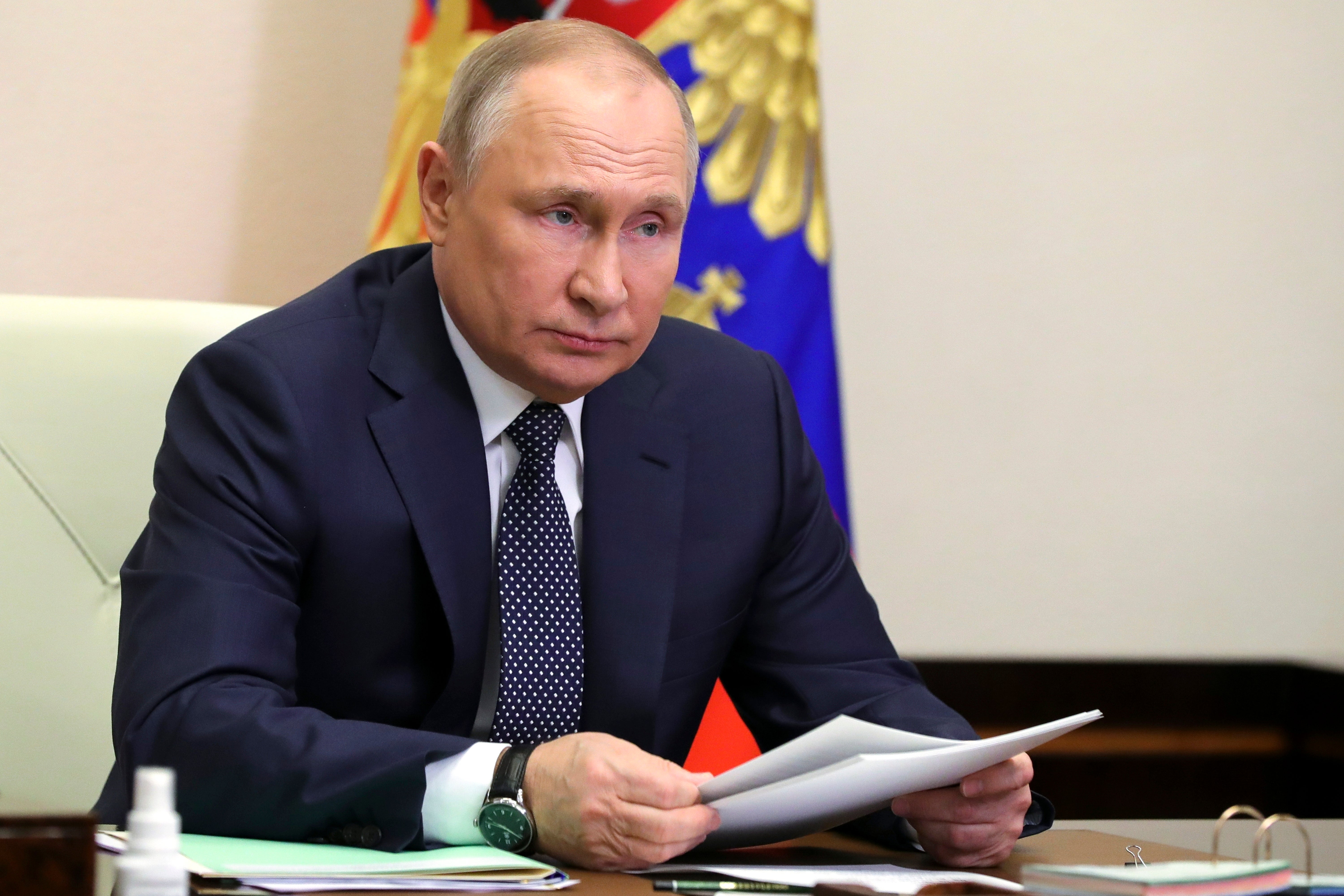Russia is as scared of the prospect of a third world war as we are
It is fear that drives Russia – fear of what it sees as Nato’s military and technological superiority, its misguided interventionism, and its reach, right up to Russia’s western borders, writes Mary Dejevsky


The war in Ukraine seems to have reached a turning point, though precisely which way it will turn is hard to tell, for the moment. In words, at least, most of the turning is being done by Russia – with a move away from the capital, Kyiv, back to a focus on the east.
Ukraine, on the other hand, reports no let-up in air strikes, and scant evidence of any Russian troop movements, save to replenish and regroup. It sees Russia’s agreement to Turkey-brokered talks as merely an attempt to buy time.
Yet there does seem to be some evidence of a change. US reports say Russia is indeed starting to move its troops away from Kyiv. Russians have left the Chernobyl nuclear power station, an early trophy. An evacuation has been agreed for those remaining in the ruined port of Mariupol, while the atmosphere in Kyiv seems to have lightened, with cafes reopening and buskers making their tentative way back onto the streets.
Of course, such interludes occur in war, and they can be as deceptive as they are welcome. But if the war is at a turning point – if the fighting is gravitating back to the Donbas, where it has simmered for the past eight years, and if talking is taking over from fighting – the reasons may not be quite as they seem.
As seen through the lens of Ukraine, and magnified by its western cheerleaders, the reasons for what might be a Russian policy change are obvious. Russia grossly misjudged the competence of Ukraine’s largely western-trained forces and the will of Ukrainians to fight for their independence.
Add to this the supposed pressures Vladimir Putin faces at home – as enumerated by the director of GCHQ during a visit to Australia – and the logical conclusion is that Russia is desperate for a way out. The only question is how far Ukraine, or the west, will be prepared to offer what diplomats call an “off-ramp” for Russia to slink home, or at least back to the positions it held before the 24 February invasion, with a degree of dignity.
Is this, though, the whole story? Every now and again, there are glimpses of the considerable losses – in lives and infrastructure – that Ukraine is sustaining, too. The war is not quite the one-sided rout it often seems. But there is also something strange about how the Russian military has followed up, or not, on what began as an all-out old-fashioned invasion.
If Putin was intent on seizing the whole of Ukraine, why has Russia not – at least, not yet – mobilised all the considerable force at its disposal? Has Ukraine really held off the might of the Russian air force? And why, to pose an equally basic question, has Russia seemingly not even tried to halt the deliveries of western weapons that have continued pretty much unimpeded into the second month of the war?
Early on, Russian missiles struck a military base where foreign military volunteers, among others, were housed, and which had served as a training centre for Ukrainian troops. Russia launched three strikes at military targets as US president Joe Biden was inveighing against Russia in a speech in Poland. But the arms convoys moving east and the refugees moving west have mostly been spared, as has central Kyiv.
Is it lack of capacity, the heroics of Ukraine’s fighters, or even consideration for civilians that has stopped Russia mounting an all-out air war? Maybe. But maybe there is something else. And that something else, I suggest, is fear – the very same fear of unleashing a third world war that has constrained Nato in its support for Ukraine.
In the early weeks of the year, the United States, the UK, and the secretary-general of Nato went out of their way in public statements to distinguish between members of Nato, who enjoy the Article 5 guarantee of protection, and Ukraine, a non-member, which does not.
When Russia invaded, perhaps encouraged by having the difference spelt out, the western response comprised sanctions on Russia, (mostly) defensive weapons for Ukraine, supplied by individual countries – ie not “badged” as being from Nato – and a lot of enthusiastic cheering from the sidelines.
Certain interventions requested by Ukraine, including a Nato no-fly zone and a batch of second-hand MiG fighter planes, were refused as they were considered likely to trigger a direct Russian response. And everyone on the western side was clear that a direct Nato-Russia clash was to be avoided at all costs, as it risked a war on a far larger scale. The corollary was that, if Russia made the slightest move on a Nato country, that really would mean a Nato-Russia war.
How far Nato can claim to be standing aloof from the Ukraine conflict, of course, is open to question. Ukraine’s regular troops have been trained and equipped by Nato, and the country also appears to be receiving a large amount of western intelligence. To that extent, there are those in the west who are describing the conflict, not unreasonably, as a “proxy” Nato-Russia war. But the extent to which the west has been trying to avoid a wider war has to be appreciated, too.
What may be less appreciated is how far Russia may have been trying to avert the same risk. So far, at least, it seems to have accepted the lines that Nato has drawn. It has also refrained from using the term “Nato proxy” in describing the war – perhaps for fear that the word could become the deed.
A question might be for how long this restraint can be sustained. Western Russia-watchers have long disagreed about what drives Russia’s actions. A majority, I would say, see Russia, especially Putin’s Russia, as an intrinsically expansionist and aggressive power. Their conclusion is that the west must stand firm and match might with might, because power is the only language Russia understands.
The other camp – to which I belong – is of the view that such a stance by the west only makes matters worse. In our thinking, what appears to be aggression on Russia’s part actually reflects fear: fear for its own security in the face of a hostile and more powerful west.
Russia’s invasion of Ukraine can be, and has been, read to support either view. The hawks say that it demonstrates Russia’s true nature as an aggressive power, and shows how right the eastern and central European countries were when they applied to join Nato as a shelter from big, bad Russia.
To keep up to speed with all the latest opinions and comment sign up to our free weekly Voices Dispatches newsletter by clicking here
To which my argument comes back that, if Russia’s genuine fears had been addressed after the end of the Cold War, and Nato had been disbanded or reconfigured, Russia would now be feeling safe and present no threat to anyone.
It is fear that drives Russia today – fear of what it sees as Nato’s military and technological superiority, fear of its misguided interventionism (Bosnia, Iraq etc), and fear of its reach, right up to Russia’s western borders.
President Biden’s remarks in Warsaw that Putin “cannot remain in power” only offered more evidence of the west’s malign intent. The damage, as some in Biden’s entourage understood, lay less in the apparent call to remove Putin than in the validation it gave to the Kremlin’s long-standing fears – the same fears that lay behind Russia’s concern about Ukraine joining Nato.
The argument about what motivates Russia will not end here. But there is a case to be made that it was the west’s refusal to acknowledge Russia’s fears, and its irresponsible war-talk through the past winter, that scared Russia into acting first.
If the war in Ukraine is indeed now at a turning point and there is a prospect for peace, then this background to the war has to be borne in mind. The west’s policy of strong talk and matching might with might failed to deter Russia. And it failed because fear is the greatest motivator of all, including in matters of peace or war.






Join our commenting forum
Join thought-provoking conversations, follow other Independent readers and see their replies
126Comments